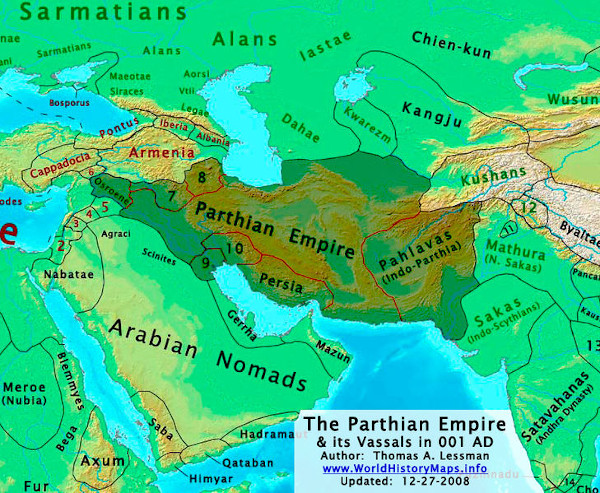INDEX:
INTRODUCTION:
BEREAN DAILY VERSE SNIPPET:
(6) In the ninth year of Hoshea, the king of Assyria took Samaria and carried Israel away to Assyria, and placed them in Halah and by the Habor, the River of Gozan, and in the cities of the Medes.
New King James Version
Assyria conquered the ten-tribed Kingdom of Israel in 718 BC. According to II Kings 17:6, Assyria "carried Israel away to Assyria." She deported the Israelites en masse, to what is now northern Iran, just south of the Caspian Sea.
Conquering Israel was not easy; the siege of Samaria, Israel's capital, lasted three years. Assyria may have "overextended" herself in the effort. Whatever the reason, Assyria began her decline almost immediately after she conquered Israel. By 650 BC, Assyria was in an advanced state of decline.
The rapid decline of Assyria afforded some Israelites the opportunity to become aggressive. Early on, some Israelite groups actually became strong enough to mount a guerilla war against their captors. Although unable to turn the tables on Assyria, they did weaken her to the extent that a confederation of the Babylonians and the Medes found it relatively easy to capture Nineveh, Assyria's capital city, in 612 BC. A few decades later, other Israelites banded together to become the Scythians, whom historians recognize as a fierce and warlike people. Centuries later, these peoples would merge with others to become the Parthians, the scourge of the Roman Empire. For the entirety of the Roman period, the Parthians effectively contained the Roman armies at the Euphrates River, keeping them from ever invading the rich Indus Valley on the Indian sub-continent (now Pakistan).
However, the majority of Israelites left the Middle East during the several decades just after Assyria's fall. They took a number of routes, of course, but in general they made their escape using several passes over the Caucasus Mountains, one of which, located in present-day Georgia, retained the name, Pass of Israel, until renamed by the godless communists of the last century.
The prophet Amos, as recorded in Amos 9:9, uses the metaphor of sifting grain to describe what God has done (and will do) to Israel. God, Amos says, "will sift the house of Israel among all nations, as grain is sifted in a sieve; yet not the smallest grain shall fall to the ground."
God will separate His people and scatter them, while at the same time keeping track of every Israelite. The Scriptures provide plenty of evidence regarding where this sifting placed the Israelites over a period of time. First, God's Word tells us where to look for Israel (Psalm 89:25; Hosea 12:1; Jeremiah 3:12-13; 31:10). Second, His Word tells us from where He will gather Israel in the last days (Jeremiah 31:10; 23:8; 31:8; 3:18; Isaiah 11:12; Hosea 11:8-10; Isaiah 49:1, 12; Isaiah 41:1, 9). The Scriptural evidence is conclusive: Israel (the northern ten tribes, not the two southern tribes now known as the Jews; see II Kings 16:5-6) is today—and will be until God re-gathers it—scattered around the world, but principally to the north and west of Jerusalem and in isles afar off."
SCRIPTURE REFERENCES:
6'In the ninth year of Hoshea the king of Assyria took Samaria, and carried Israel away into Assyria, and placed them in Halah and in Habor by the river of Gozan, and in the cities of the Medes.' (KJV)
Translation difference
'In the ninth year of Hoshea, the melech of Ashshur took Shomron, and carried Yisrael away into Ashshur, and placed them in Chalach and in Chavor by the River Gozan, and in the cities of the Medes. 995 996 997' (The Restoration Scriptures)
995 - Fall of the capital.
996 - These areas were later key cities of the Medo-Persian Empire. This exile is 200 years before Judah was driven to Babylon. The Efrayimite exile was beyond the River Euphrates in a northeast direction, whereas as the Jews went to the area of the River Cheber due east into Babylon. There were two-houses, in two different dispersions, at two different times. They were not the same people at that time.
997 - Halah, Habor and Gozan were in the Mesopotamian region of the Assyrian empire, but the cities of the Medes were located southeast of the Caspian Sea in modern Iran. It is likely that the Assyrians settled the Yisraelites in many different areas of their empire (not just Nineveh), in order to prevent them from consolidating their strength. The Lost Ten Tribes Of Yisrael Found; Steven M. Collins, p. 119.


